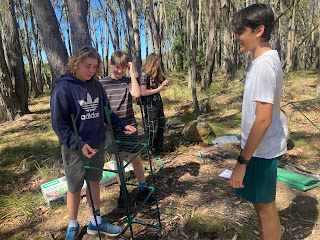Kitchen Garden Blog #12: Term 1 Cooking Highlights

Kitchen Garden Blog #12: Term 1 Cooking Highlights The dry summer really knocked our Kitchen Garden around, so we've spent a lot of Term One installing drip irrigation on timers so that we never have to worry about that again. The water comes from the big dam at the bottom of the "golf course" so should be a great water source for years to come. What the dry summer didn't take care of, the kangaroos and possums did. So the other big project this term has been building some garden beds inside the completely wired off orchard and to do our best to net and protect all of the garden beds outside. On top of that we've been planting seeds to put in the green house, many of which are getting very close to planting out. Brassicas, spinach, leeks, beetroot and lettuce. We've been direct sowing broad beans and are starting to contemplate garlic plantings. We did manage to harvest some beautiful yellow zucchinis and the apple trees in the orchard are laden with apple...





